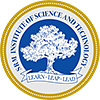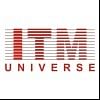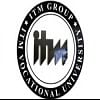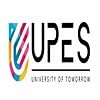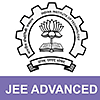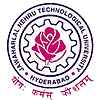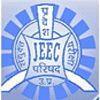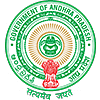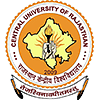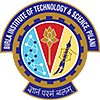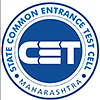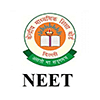
Table of Contents
SRMGEET 2023 syllabus is set by the conducting authority. Candidates can go through the entire syllabus provided on this page and come up with a preparation schedule based on the topics that are their strengths and weaknesses.
- SRMGEET 2023 Syllabus for Civil (Code 01)
- SRMGEET 2023 Syllabus for Mechanical (Code 02)
- SRMGEET 2023 Syllabus for Electrical (Code 03)
- SRMGEET 2023 Syllabus for Electronics (Code 04)
- SRMGEET 2023 Syllabus for Instrumentation (Code 05)
- SRMGEET 2023 Syllabus for Computer Science (Code 06)
- SRMGEET 2023 Syllabus for Chemical (Code 07)
- SRMGEET 2023 Syllabus for Bio-Technology (Code 08)
- SRMGEET 2023 Syllabus for GIS (Code 09)
- SRMGEET 2023 Syllabus for Environmental (Code 10)
- SRMGEET 2023 Syllabus for Health Food Processing (Code 11)
- SRMGEET 2023 Syllabus for Materials Science (Code 12)
SRMGEET 2023 Syllabus
Following is the syllabus for SRMGEET 2023:
SRMGEET 2023 Syllabus for Civil (Code 01)
Mathematics: (i) Vector calculus (ii) Determinants and Matrices (iii) Analytic function theory (iv) Calculus and Ordinary Differential Equations (v) Numerical Methods (vi) Probability and Statistics
Other Topics: (i) Mechanics of Solids and Structural Analysis (ii) Concrete and Steel Structure (iii) Soil Mechanics and Geo-Technical Engineering (iv) Fluid Mechanics and Water Resources Engineering (v) Environmental Engineering (vi) Surveying (vii) Transportation Engineering (viii) Remote Sensing (ix) Geographic Information Systems (GIS)
SRMGEET 2023 Syllabus for Mechanical (Code 02)
Mathematics: (i) Vector calculus (ii) Determinants and Matrices (iii) Analytic function theory (iv) Calculus and Ordinary Differential Equations (v) Numerical Methods (vi) Probability and Statistics
Other Topics: (i)Mechanics and Machine Design (ii) Material Science and Metallurgy (iii) Thermodynamics (iv) Refrigeration and Air Conditioning (v) Production Technology (vi) Automotive Engines (vii) Automotive Transmission (viii) Strength of Materials (ix) Casting, metal forming and metal joining processes (x) Tool Engineering, Machine tool operation, Metrology and inspection (xi) Engineering Materials, Processing of Plastics and Computer-Aided Manufacturing (xii) Product Design, Process Planning, Cost Estimate, Design of Jigs and Fixtures and Press Tools (xiii) Operations Research. (xiv) Operations Management (xv) Quality Control Reliability and Maintenance
SRMGEET 2023 Syllabus for Electrical (Code 03)
Mathematics: (i) Vector calculus (ii) Determinants and Matrices (iii) Analytic function theory (iv) Calculus and Ordinary Differential Equations (v) Numerical Methods (vi) Probability and Statistics
Other Topics: (i) Networks Circuit Elements, Laws, and theorems – Resonance – Coupled circuits – AC steady state and Transient Analysis (ii) Devices Energy bands, Charge carriers in semiconductors – semiconductor junctions – semiconductor diodes and its types – transistors – FET – SCR – IGBT – DIAC – TRIAC – UJT – Power supplies (iii) Electronic Circuits Biasing methods and small signal models – Transistor amplifier and analysis – Feedback amplifiers and oscillators – Large signal and tuned amplifiers – Frequency response and wave shaping circuits (iv) Digital Number systems – Boolean algebra – Logic gates – Logic families – Gate level minimization and combinational logic – Synchronous and Asynchronous sequential logic – Memory (v) Microprocessor Intel 8085 microprocessor – Intel 8086/8088 microprocessor – Intel 8031/8051 micro controller – Programmable interfacing devices – Applications (vi) Control System Transfer function – Mathematical Modeling – Block diagram reduction - Control system components – Transient and steady state analysis – Stability analysis – Frequency domain analysis (vii) Electromagnetics (viii) Electrical Machines (ix) Power Electronics and Solid State Drives & Control (x) Power Systems
SRMGEET 2023 Syllabus for Electronics (Code 04)
Mathematics: (i) Vector calculus (ii) Determinants and Matrices (iii) Analytic function theory (iv) Calculus and Ordinary Differential Equations (v) Numerical Methods (vi) Probability and Statistics
Other Topics: (i) Networks Circuit Elements, Laws, and theorems – Resonance – Coupled circuits – AC steady state and Transient Analysis (ii) Devices Energy bands, Charge carriers in semiconductors – semiconductor junctions – semiconductor diodes and its types – transistors – FET – SCR – IGBT – DIAC – TRIAC – UJT – Power supplies (iii) Electronic Circuits Biasing methods and small signal models – Transistor amplifier and analysis – Feedback amplifiers and oscillators – Large signal and tuned amplifiers – Frequency response and wave shaping circuits (iv) Digital Number systems – Boolean algebra – Logic gates – Logic families – Gate level minimization and combinational logic – Synchronous and Asynchronous sequential logic – Memory (v) Microprocessor Intel 8085 microprocessor – Intel 8086/8088 microprocessor – Intel 8031/8051 micro controller – Programmable interfacing devices – Applications (vi) Control System Transfer function – Mathematical Modeling – Block diagram reduction - Control system components – Transient and steady state analysis – Stability analysis – Frequency domain analysis (vii) Signals and Systems (viii) Communications (analog) (ix) Communications (Digitals) (x) Electromagnetics
SRMGEET 2023 Syllabus for Instrumentation (Code 05)
Mathematics: (i) Vector calculus (ii) Determinants and Matrices (iii) Analytic function theory (iv) Calculus and Ordinary Differential Equations (v) Numerical Methods (vi) Probability and Statistics
Other Topics: (i) Networks Circuit Elements, Laws, and theorems – Resonance – Coupled circuits – AC steady state and Transient Analysis (ii) Devices Energy bands, Charge carriers in semiconductors – semiconductor junctions – semiconductor diodes and its types – transistors – FET – SCR – IGBT – DIAC – TRIAC – UJT – Power supplies (iii) Electronic Circuits Biasing methods and small signal models – Transistor amplifier and analysis – Feedback amplifiers and oscillators – Large signal and tuned amplifiers – Frequency response and wave shaping circuits (iv) Digital Number systems – Boolean algebra – Logic gates – Logic families – Gate level minimization and combinational logic – Synchronous and Asynchronous sequential logic – Memory (v) Microprocessor Intel 8085 microprocessor – Intel 8086/8088 microprocessor – Intel 8031/8051 micro controller – Programmable interfacing devices – Applications (vi) Control System Transfer function – Mathematical Modeling – Block diagram reduction - Control system components – Transient and steady state analysis – Stability analysis – Frequency domain analysis (vii) Transducers and Industrial Instrumentation (viii) Biomedical Instrumentation (ix) Electrical and Electronic measurements and instrumentation (x) Process control
SRMGEET 2023 Syllabus for Computer Science (Code 06)
Mathematics: (i) Vector calculus (ii) Determinants and Matrices (iii) Analytic function theory (iv) Calculus and Ordinary Differential Equations (v) Numerical Methods (vi) Probability and Statistics
Other Topics: (i) Discrete Mathematical Structures (ii) Micro Processor and Hardware Systems (iii) Computer Organization and Architecture (iv) System Programming including Assemblers, Compilers (v) Operating Systems (vi) Programming Methodology & Software Engineering (vii) Data Structures and Algorithms (viii) Database Systems (ix) Computer Networks
SRMGEET 2023 Syllabus for Chemical (Code 07)
Mathematics: (i) Vector calculus (ii) Determinants and Matrices (iii) Analytic function theory (iv) Calculus and Ordinary Differential Equations (v) Numerical Methods (vi) Probability and Statistics
Other Topics: (i) Chemical process calculations (ii) Chemical Process Industries (iii) Mechanical Operations (iv) Fluid Mechanics (v) Heat Transfer (vi) Mass Transfer (vii) Thermodynamics (viii) Chemical Reaction Engineering (ix ) Instrumentation & Control (x) Process Engineering Economics
SRMGEET 2023 Syllabus for Bio-Technology (Code 08)
(i) Cell Structure, Function (ii) Properties of Nucleic Acids, Protein Synthesis (iii) Gene Manipulation, Transgenic Microbes (iv) Plants and Animals (v) Metabolism and Bio-Energetics (vi) Gene Regulation (vii) Enzyme Kinetics, Fermentation Process, Production of commercially important enzymes (viii) Recombinant proteins (ix) Microbial Growth Kinetics (x) Biosafety, Bioethics and Intellectual Property Rights (xi) Bioconversion (xii) Fermentation Kinetics, Bioreactors (xiii) Genomics and Proteomics (xiv) Computer Applications in Bio-Technology (xv) Nano Biotechnology (xvi) Application of Bio-Technology (xvii) Systems Biotechnology
SRMGEET 2023 Syllabus for GIS (Code 09)
Mathematics: (i) Vector calculus (ii) Determinants and Matrices (iii) Analytic function theory (iv) Calculus and Ordinary Differential Equations (v) Numerical Methods (vi) Probability and Statistics.
Other Topics: (i) Remote sensing: physics of remote sensing (ii) Photogrammetry: Photogrammetry (iii) Surveying: Surveying Techniques (iv) GIS: Terminology (v) Geology: Geological Remote Sensing (vi) Agriculture and forestry, (vii) Environment and disaster studies: EIA (viii) Urban and regional planning: Urban Planning
SRMGEET 2023 Syllabus for Environmental (Code 10)
Mathematics: (i) Vector calculus (ii) Determinants and Matrices (iii) Analytic function theory (iv) Calculus and Ordinary Differential Equations (v) Numerical Methods (vi) Probability and Statistics
Other Topics: (i) Environmental Pollution (ii) Environmental Biotechnology (iii) Thermodynamics (iv) Ecology (v) Environmental Conservation (vi) Water Resources (vii) Ecology and Sustainable Development (viii) Remote Sensing (ix) Energy and Environmental (x) Environmental Impact Assessment (xi) Current Topics in Environmental Sciences (xii) Soil Pollution and Solid Waste Management (xiii) Natural Hazards (xiv) Environmental and Occupational
SRMGEET 2023 Syllabus for Health Food Processing (Code 11)
Bioprocess Engineering: Properties of Vapors and Gases. Energy Balances/Conservation of Energy; Entropy; Ideal Gas Mixtures and Psychometrics. Steady-state Heat Transfer; One-dimensional Heat Conduction; Heat Transfer through a Composite Wall; Conduction, Forced Convection; Overall Heat Transfer Coefficient; Heat Exchangers; Radiation Heat Transfer. Basic bioprocess engineering and reactor concepts; Stoichiometry, mass and energy balances; Fluid flow and mixing in bioreactors; Heat transfer in bioprocesses; Mass transfer in bioprocess; Reaction and cell growth kinetics; Downstream processing unit operations, Process instrumentation.
Food Engineering: Dimensions and units, Evaporation, crystallization, distillation, mechanical separations, size reduction and mixing, properties of food, blanching, pasteurization, sterilization, extrusion, aseptic processing, drying, material handling, dairy plant engineering, cereal processing, fat and oil processing, sugar cane processing, food preservation, storage, non-thermal food processing, bakery and confectionery, meat and poultry processing, Food safety and waste management, food packaging technology.
Biochemistry and Nutrition: Enzymes, Coenzymes, Cofactors, Elements of carbohydrates, fat and protein metabolism, Elements of photosynthesis, Food Requirements, Vitamins and their functions in the body, Minerals and their functions in the body, Elements in protein biosynthesis-Nucleic acids and their importance.
Microbiology: Microorganism, isolation of microorganism, identification, stains and staining techniques, Growth, nutrition, and physiology of microorganism, diseases, and control, microbial genetics, microbial spoilage in food, beneficial microorganism, probiotic and prebiotic. Fermentation-Process, types, design, Fermented food products. Enzymes-production primary and secondary metabolites, application in the food industry.
SRMGEET 2023 Syllabus for Materials Science (Code 12)
Mathematics: (i) Vector Calculus (ii) Determinants and Matrices (iii) Analytic function theory (iv) Calculus and Ordinary Differential equations (v) numerical methods (vi) Probability and statistics
Quantum Mechanics, Atomic and Molecular Physics: Black body radiation, photoelectric effect – wave-particle duality of radiation– de-Broglie hypothesis of matter waves – Heisenberg’s uncertainty principle – Schrödinger’s wave equation – physical interpretation of wave function-Eigen-values and Eigen-functions – particle in a box-simple harmonic oscillator-Motion in a central potential-orbital angular momentum–particle in a square-well potential – potential barrier-Spectra of one and many-electron atoms-LS and JJ coupling - fine structure – spectroscopic terms and selection rules – hyperfine structure – exchange symmetry of wave function –Pauli's exclusion principle Zeeman and Stark effects - X-ray – Auger transitions – Compton Effect-basic principles rotational and vibrational spectra of diatomic molecules-electronic transition in diatomic molecules-Franck-Condon principle-Raman effect-NMR-ESR-Nuclear properties and forces– radioactivity - alpha, beta and gamma radiation
Solid State Physics: Crystal structure, Bravais lattices and its basis, Miller indices- Crystal symmetry, point group and space group elements - crystal diffraction and reciprocal lattice-elementary ideas about point defects and dislocations (edge and screw) - Physical Properties of materials - lattice vibrations, phonons - specific heat of solids – thermal and electrical conductivity - Dielectrics behaviour - Polarization mechanisms, Clausius-Mossotti equation, Piezo, Pyro and Ferro electricity-free electron theory of metals- Fermi energy and density of states- -Energy levels in One Dimension, Fermi-Dirac Distribution, Effect of Temperature on the Fermi-Dirac Distribution, free-electron Gas in Three Dimension-origin of energy bands- Elements of band theory – Electrons motion in a periodic potential, the concept of holes and effective Marshall effect- Different types of materials: Metals, Semiconductors, Composite materials, Ceramics, Alloys, Polymers
Lasers: Basic Principle of Laser- Threshold condition-Einstein Coefficients - condition for light amplification - Line shape function - Optical Resonators -CW operation of laser; Critical pumping rate- Population inversion and photon number in the cavity around threshold; Output coupling of laser power- Optical resonators- Cavity modes- Three-level and four-level systems. Solid State lasers - Ruby and Nd-YAG Laser - Gas lasers - He-Ne and Co2 lasers - semiconductor lasers - Heterojunction lasers - Liquid Dye lasers - Q-switching and mode-locking. Application of laser in industry-Medical applications -Holography - Theory of recording and reconstruction - application of Holography
Electricity and Magnetism: Electrostatics; Coulomb’s law, Gauss’s law and its applications, Laplace and Poisson equations, boundary conditions Conductors, capacitors, dielectrics, dielectric polarization, volume and surface charges, electrostatic energy, Magnetostatics, BiotSavart law, Ampere’s law, Faraday’s law of electromagnetic induction, Maxwell’s equations and static and time-varying equations, Poynting theorem Lorentz Force and motion of charged particles in electric and magnetic fields, energy and momentum of electromagnetic waves, radiation from a moving charge. Electromagnetic waves in free space, dielectrics, and conductors, Reflection and refraction, polarization, Fresnel’s Law, interference, coherence, and diffraction, Dia, Para and Ferromagnetism, Langevin’s theory of paramagnetism
Thermodynamics: Thermodynamic system – Path and Process – Zeroth law of Thermodynamics – Concept of Temperature – First law of Thermodynamics - Isothermal and Adiabatic Processes – Second law of Thermodynamics – Reversible and Irreversible processes – Carnot’s Engine – Thermodynamic Substance of Pure Substances – Kinetic Theory of gases – Law of Equipartition Energy – Ideal and Real Gases – Equation of State – Thermodynamic relation – T-ds relation – Maxwell’s Equation – Phase Transitions – Gibbs’s Phase Rule – Van’t Hoff’s Equation
Materials Chemistry: Atomic structure – Bohr’s theory – Exclusion principle – Hund’s rule – Aufbau principle – Periodic law and arrangement of elements – Bonding structure – Ionic, Covalent, Metallic, Weak bonds- Acids and Bases- Chemical periodicity - Structure and bonding in homo- and heteronuclear molecules (VSEPR Theory) - Allotropes of carbon: graphite, diamond, C60. Synthesis and reactivity of inorganic polymers of Si and P – Hydrocarbons - IUPAC Nomenclature - Hybridization – Aromaticity – Huckel’s rule – Tautomerism – Stereochemistry – Electrochemistry - Electrochemical cells; standard electrode potentials: applications – corrosion and energy conversion
Biology and Health Sciences: Anatomy: Cardiovascular System-Respiratory System-Excretory System. Physiology: Chemical composition of the body -Neurons & membrane potentials. Basic Cell Biology: Cell components- Cell membrane structure- DNA structure. Genetics: DNA replication-transcription and translation-Bacteriology: Bacterial cell- structure and function. Virology: Bacteriophage-Microbes- Types. Common infectious diseases: Hepatitis, Malaria, HIV/AIDS. Cancers: Types and Classification. Biochemistry: Amino acids- CarbohydratesLipids. Immunology: components and response to foreign body
Electronics: Semiconductors: Intrinsic and extrinsic semiconductors, Fermi level, P-N junction diodes bipolar junction transistors and its applications, field-effect transistors, JFET, MOSFET, MESFET, MOSFET and CCD: Various structures and their functioning, I-V characteristic studies and applications, Transistor circuits in CE, CB, CC modes, Amplifier circuits with transistors-Operational amplifier and its applications: Inverting, non-inverting, adder, subtractor, differentiator, waveform generator, comparator, filters (LPF, BPF, HPF), Schmitt trigger, the 555 timer -Gates, flip flops, switches, registers, counters, multivibrators, principles of A/D and D/A converters, applications of A/D and D/A Converters, Regulators-CMOS process technology: silicon –semiconductor technology, wafer processing, oxidation, epitaxial, deposition, ion implantation and diffusion, n-well CMOS process, p-well CMOS process, Twin tub CMOS process and silicon on insulator
MEMS/ NEMS: Top-down approach- front end approach-MEMS materials-MEMS Fabrication Techniques: Bulk micromachining, Surface micromachining, Micro-molding processes, Nonlithography based localized micro machining- Applications of MEMS/NEMS- Mechanical Transducers: transduction methods, accelerometers, gyroscopes, pressure sensors-Design, Scaling Properties/Issues- Chemical and Biological Transducers: chemical sensors, molecule-based biosensors, cell-based biosensors, chemical actuators, biological transducers, and electrophoresis- optical transducers- thermal transducers-magnetic transducers-RF transducers- Characterization of Micro/Nano Electromagnetic Mechanical Systems
